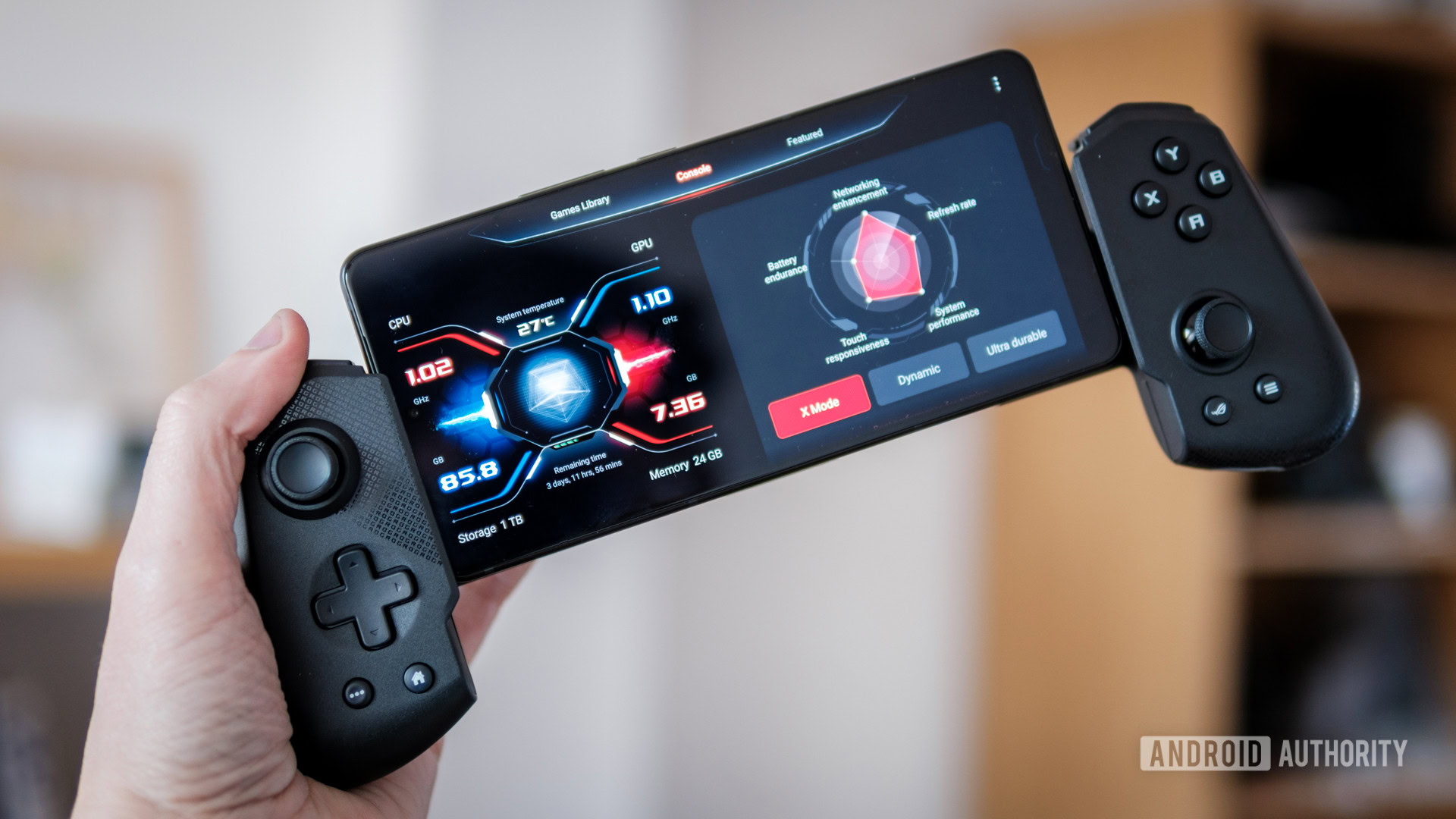
Robert Triggs / Android Authority
To look at the benchmarks firing out of the first handsets powered by the Qualcomm Snapdragon 8 Elite, it appears that the new processor offers massive performance gains over its predecessors. With scores approaching a 40% boost over the already blazing-fast Snapdragon 8 Gen 3, is this the must-have chip for gaming?
Well, hold on a second. Benchmarks are one thing, but while theoretical scores can creep ever higher, maximum frame rates in the best Android games are often locked at a very reachable 60fps. So, will buying a Snapdragon 8 Elite phone really boost your gaming experience and not just benchmark scores? I’ve run a bunch of games to find out.
You’re reading an Authority Insights story. Discover Authority Insights for more exclusive reports, app teardowns, leaks, and in-depth tech coverage you won’t find anywhere else.
Games vs benchmarks: What’s the difference?
Before getting into the games, let’s look at what the benchmarks suggest the performance differences should be. For this test, I’ve grabbed three phones: the ASUS ROG Phone 9 Pro (the first 8 Elite handset I could get my hands on), the ASUS Zenfone 11 Ultra (essentially the last-gen ROG with the cooling and other gaming bits stripped down for more mainstream appeal), and the Google Pixel 8 Pro (considered rather weedy when it comes to GPU grunt, but an interesting comparison point).
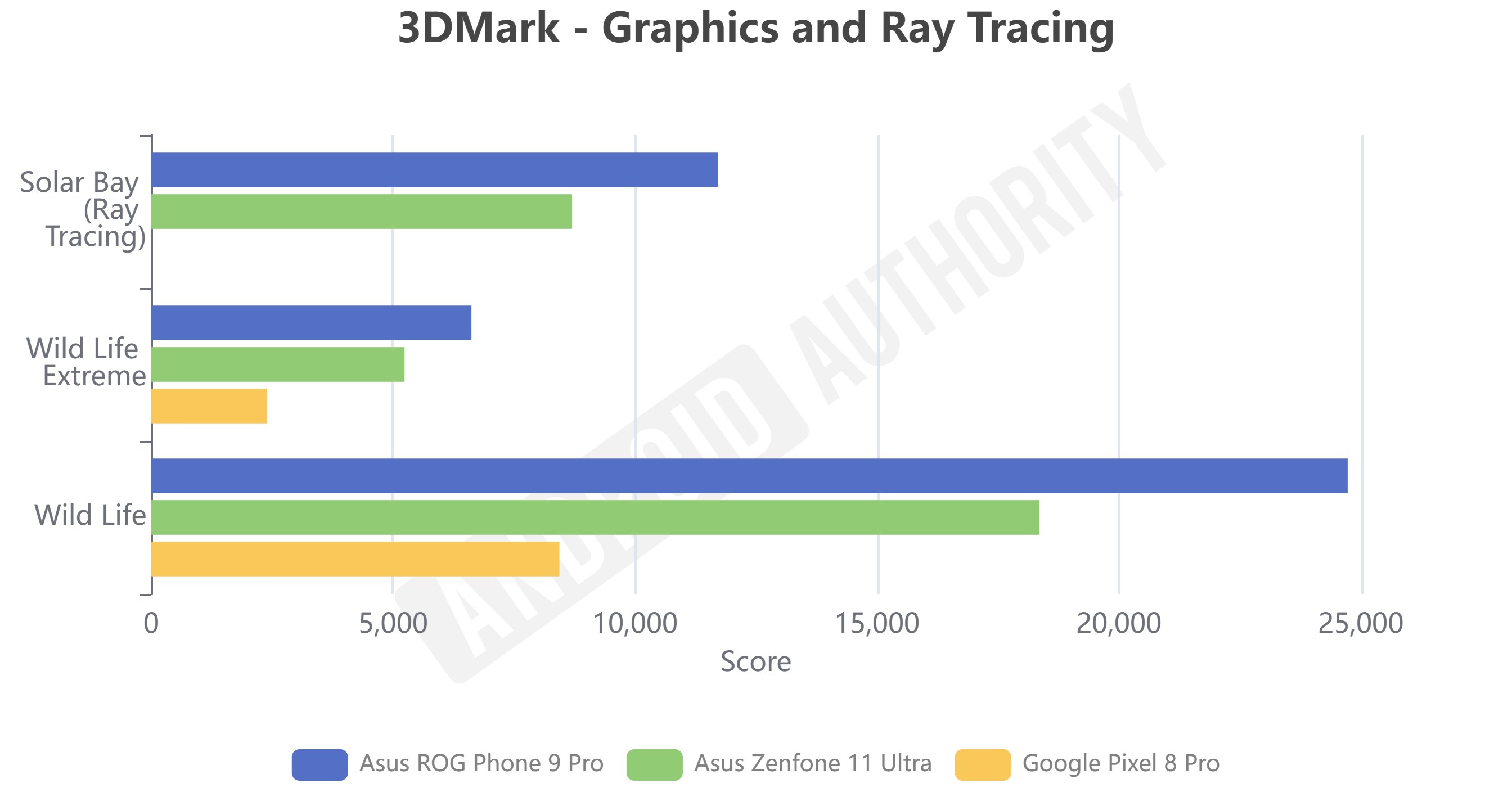
Looking at 3DMark’s various graphics benchmark tests, the new ASUS ROG Phone 9 Pro outperforms last year’s chip by about 32% on average, which could certainly be the difference between choppy and smooth gameplay. More impressively, it clobbers last year’s Pixel 8 Pro, suggesting almost 3x the potential frame rate if that same performance boost applies to games. But does that actually pan out?
To test, I ran PUBG on HDR settings with 4x AA and the Extreme (60fps) frame rate cap, Genshin Impact max-out, F-Zero GX on the Dolphin emulator using the Vulkan API, and Call of Duty Mobile on medium to enable the 120fps limit. The test captures a six-minute gameplay segment (or a three-minute round in COD), sticking to the same maps and areas as much as possible. Let’s start with the fast-paced FPS titles.
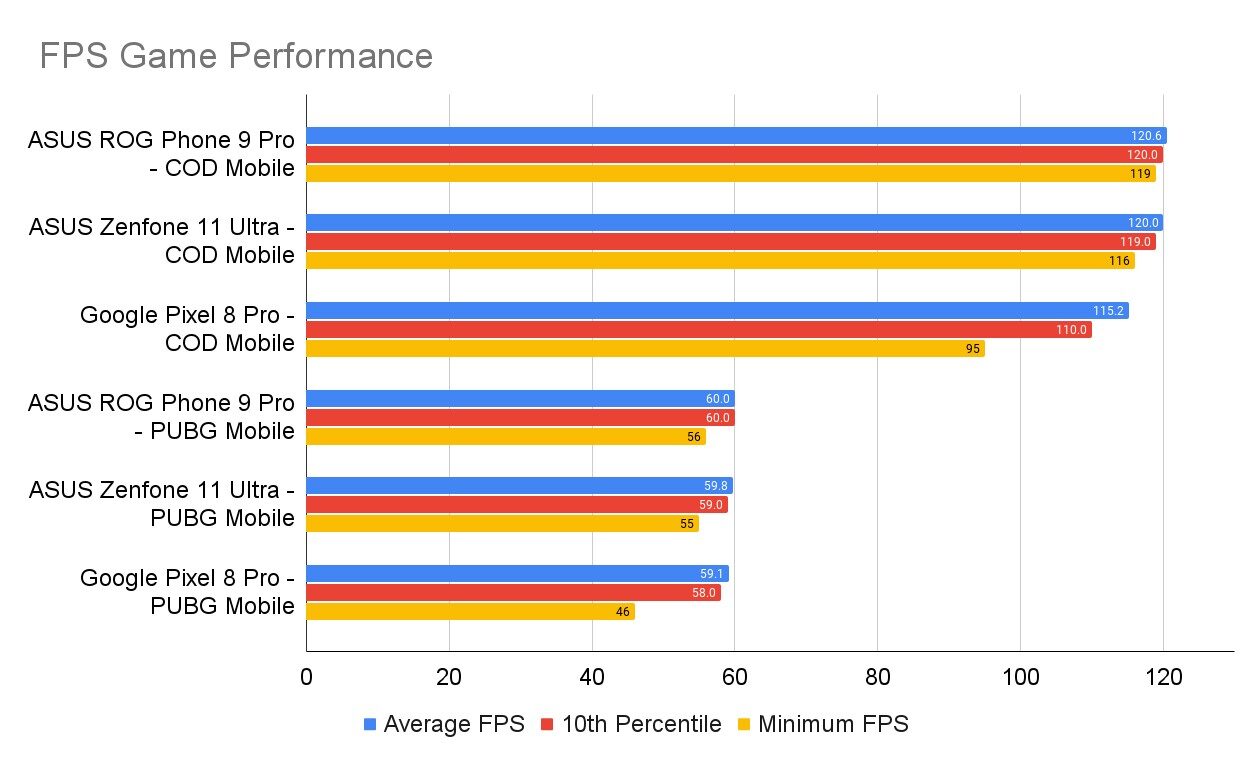
Neither COD Mobile nor PUBG Mobile is particularly demanding in the graphics department, especially as the maximum settings are locked off when pushing for maximum frames. None of these three phones have trouble here; even the Pixel 8 Pro and its more mid-range seven-core Mali-G715 GPU provides ample, stable performance. That said, Google’s phone can’t quite hit 120fps in COD, averaging around 110 with pretty erratic variations, and it suffers bigger but still rare dips in PUBG.
While benchmarks suggest a big difference, this doesn't pan out in popular FPS titles.
Smooth, but certainly not as smooth as the virtually locked 120fps and 60fps values for the Snapdragon 8 Elite and 8 Gen 3, which easily handle these FPS games, even at high frame rates. With minimal jank detected either, there are only ultra-fine margins in favor of Qualcomm’s latest processor, so you won’t notice any meaningful difference if these are your predominant titles.
Snapdragon 8 Elite vs demanding games
For our more demanding titles, we’re breaking out the full frame-rate timeline graphs to help visualize the dips. Starting with Genshin Impact, clearly, the Pixel 8 Pro is less suited to maximum settings. It’s still very playable at constantly above 30fps, but you can feel the inconsistency, and there’s some considerable jank latency here, with values regularly exceeding 50ms. Still, turn down the graphics just a bit or pop on a 30fps cap, and the Pixel 8 Pro offers a solid experience that’s not as far off the pace as the benchmark discrepancy suggested.
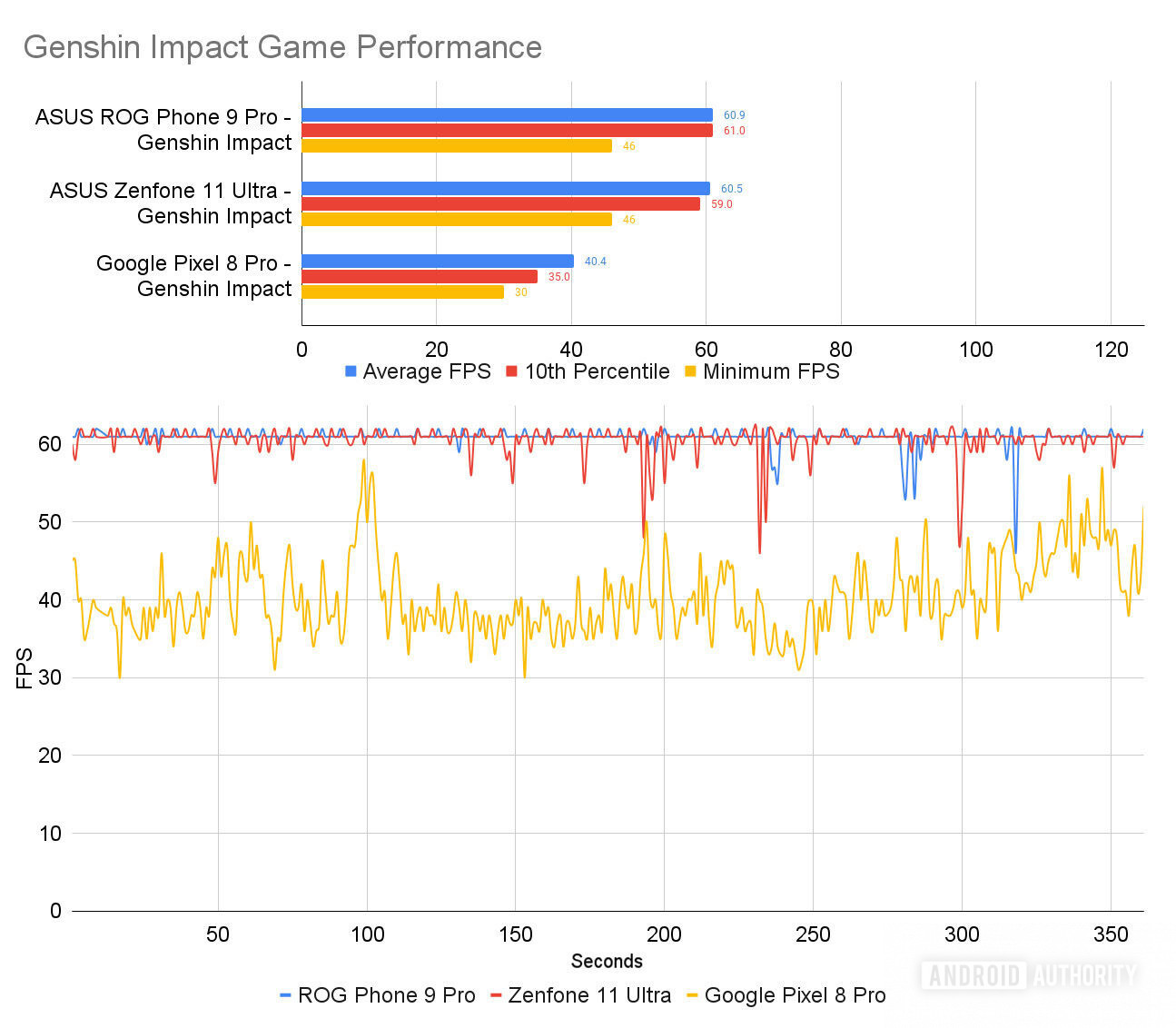
Still, the last two Snapdragon generations are a level up here, locking tightly to Genshin’s 60fps Android cap. Once again, there’s very little difference between the Snapdragon 8 Elite and Snapdragon 8 Gen 3 in terms of average, top 90%, and minimum frame rates. Our timeline graph helps visualize the subtle differences a little better. The 8 Elite suffers slightly fewer drops, and they’re shorter-lived, providing a marginally smoother experience. It’s locked to 60fps that little tighter. Similarly, I detected slightly fewer frame janks and lower jank latency when they did occur, further smoothing out those occasional blips.
The Snapdragon 8 Elite is fractionally smoother in the most demanding games, but it's fine margins.
Equally as demanding as high-end Android games is running classic titles under emulation. F-Zero GX demands high frame rates and, surprisingly, all three handsets deliver comparable frame rates. Even the Pixel 8 Pro is virtually locked to 60fps during races, owing to Arm’s superb Vulkan API optimizations.
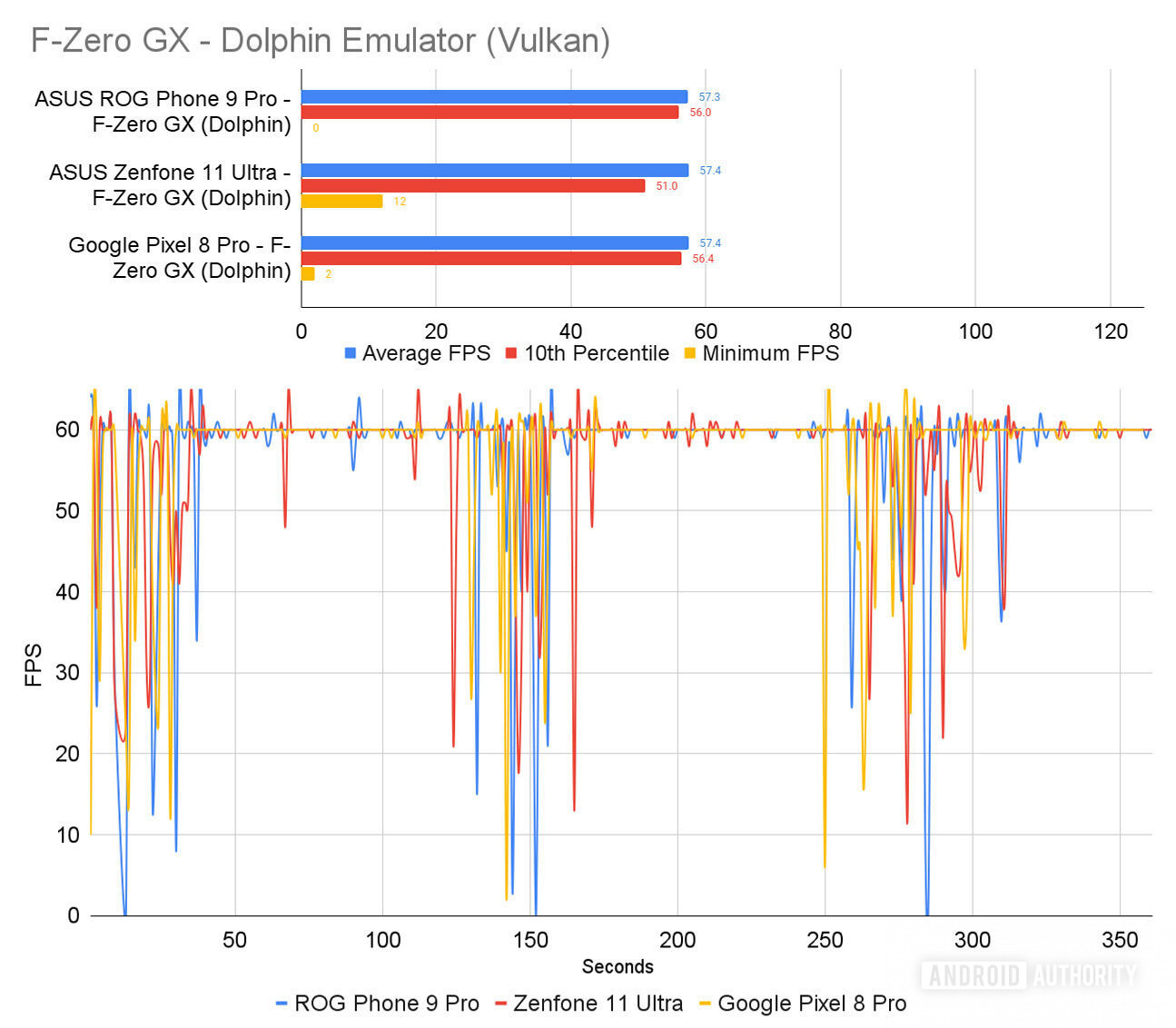
All three chipsets experience equally substantial dips when moving between menus and starting up races. Loading in assets is often a bottleneck during emulation, and even the 8 Elite suffers here. However, the Snapdragon 8 Elite sees fewer random drops in game than the 8 Gen 3. The Tensor G3, somewhat surprisingly, is also marginally smoother than the 8 Gen 3 when we look at the top 90% of frames but does suffer lower lows.
However, Google’s phone produces significantly more janks and higher jank times. These aren’t visualized on the graph, but there are countless 60ms janks per minute and several over 100ms, resulting in performance that feels a lot less smooth than the frame rate suggests. This is likely a result of the weaker CPU struggling with both emulation and frame compiling tasks.
Despite FPS similarities, the 8 Elite suffers the fewest janks during emulation.
Likewise, the Snapdragon 8 Gen 3 recorded a couple of janks lasting longer than 100ms during each race, producing very perceivable stutters. The Snapdragon 8 Elite did not; it saw fewer and shorter janks below 20ms and these are almost exclusively confined to the menus. Once again, the improvements are subtle, but the 8 Elite’s higher performance potential certainly helps smooth out those edge cases.
Should you upgrade to a Snapdragon 8 Elite phone for better gaming performance?
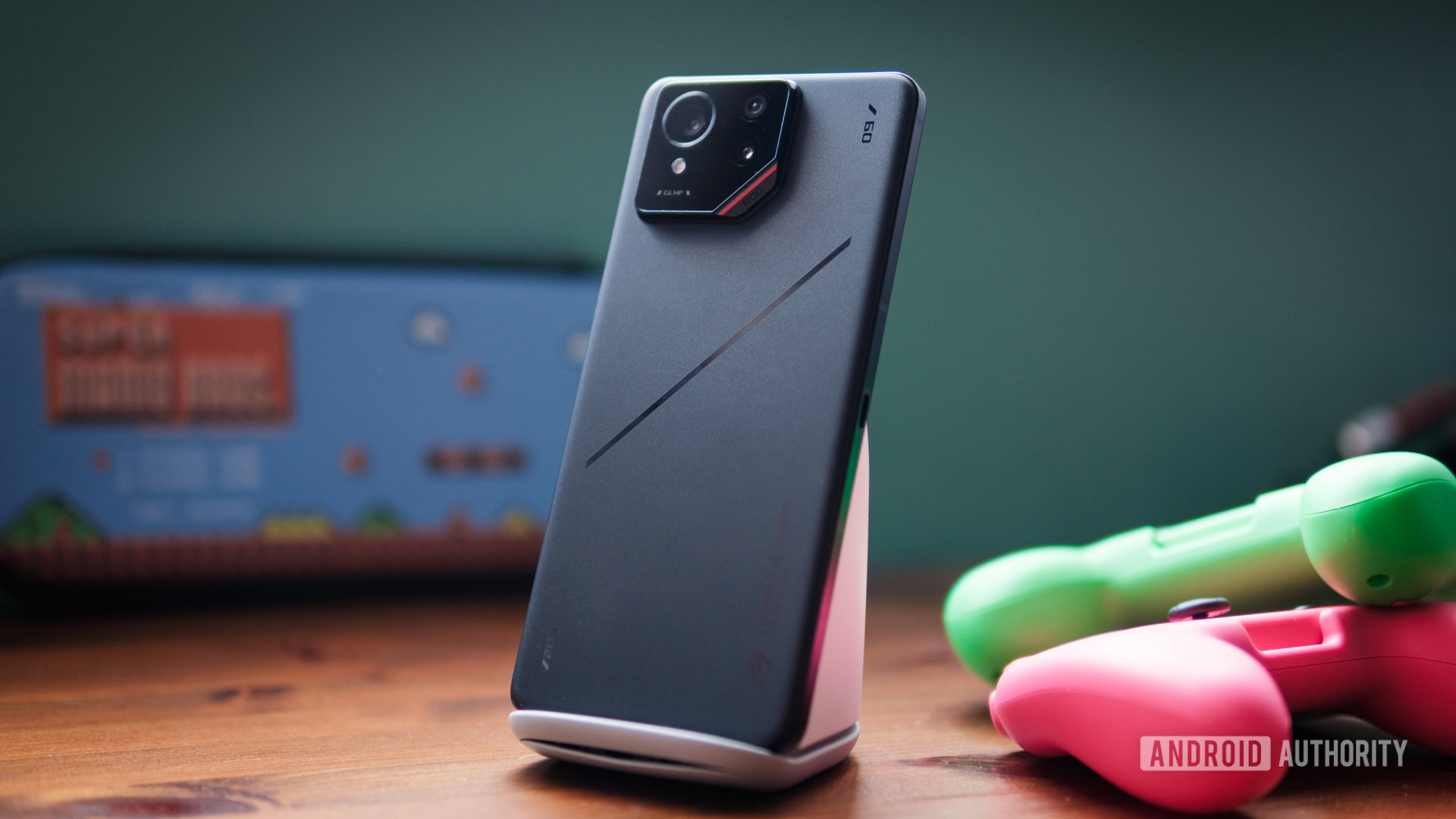
Robert Triggs / Android Authority
Qualcomm’s Snapdragon 8 Elite clearly offers the smoothest gaming experience out of the models we’ve tested, but whether to upgrade to one of the few Snapdragon 8 Elite phones depends entirely on what you’re upgrading from.
Hopefully, our gaming tests highlight that, despite showcasing huge benchmark gains, you’re probably not going to see any meaningful difference coming from a last-gen handset, even in today’s more demanding titles. Emulation is perhaps the one exception, where the experience felt noticeably smoother.
I highly recommend gamers grab a Snapdragon 8 Elite phone, but only if they don’t already own a recent model.
Testing the Pixel 8 Pro might have seemed like an odd choice, but remember, it offers performance around that of a three-gen-old Snapdragon 8 Gen 1. The results suggest there are more significant gains to be had when moving from slightly older flagships. However, the differences are only really noticeable in the most graphically demanding games. Remember, the vast majority of Android games target a broad consumer base than cutting-edge graphics, and turning down a setting or two means virtually all games are playable at good frame rates on older phones.
That said, the Snapdragon 8 Elite is a more frugal chip. You’ll be able to game that bit longer and run all your daily tasks without wearing down the battery as quickly. Its benchmarking performance potential also suggests the chip has plenty more gaming headroom to handle more demanding games that will undoubtedly hit the market in the coming years. I highly recommend gamers grab a Snapdragon 8 Elite phone, but only if they don’t already own a recent model.

ASUS ROG Phone 9 Pro
Overkill performance
Outstanding battery life
Fast, universal charging

ASUS ROG Phone 9
Overkill performance
Outstanding battery life
Fast, universal charging

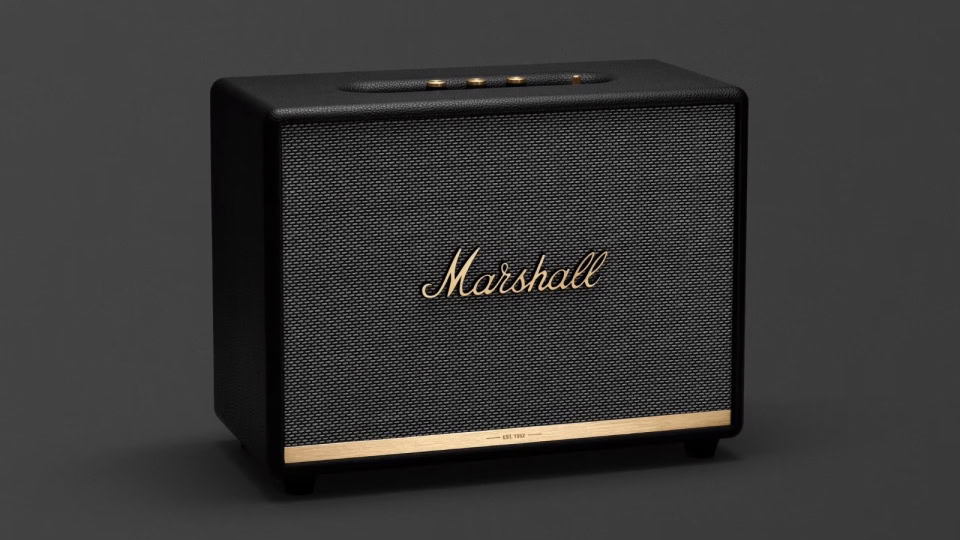
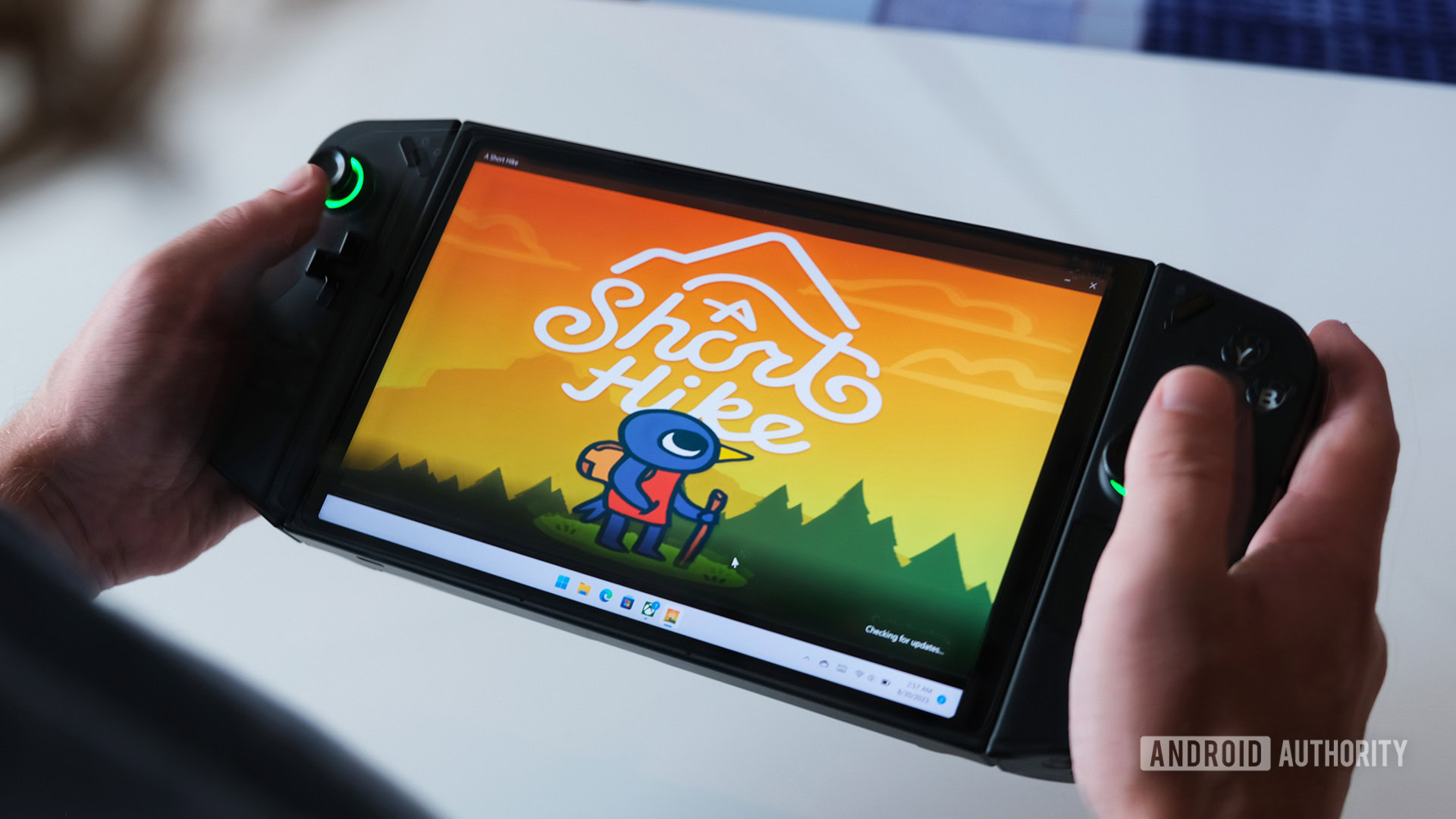
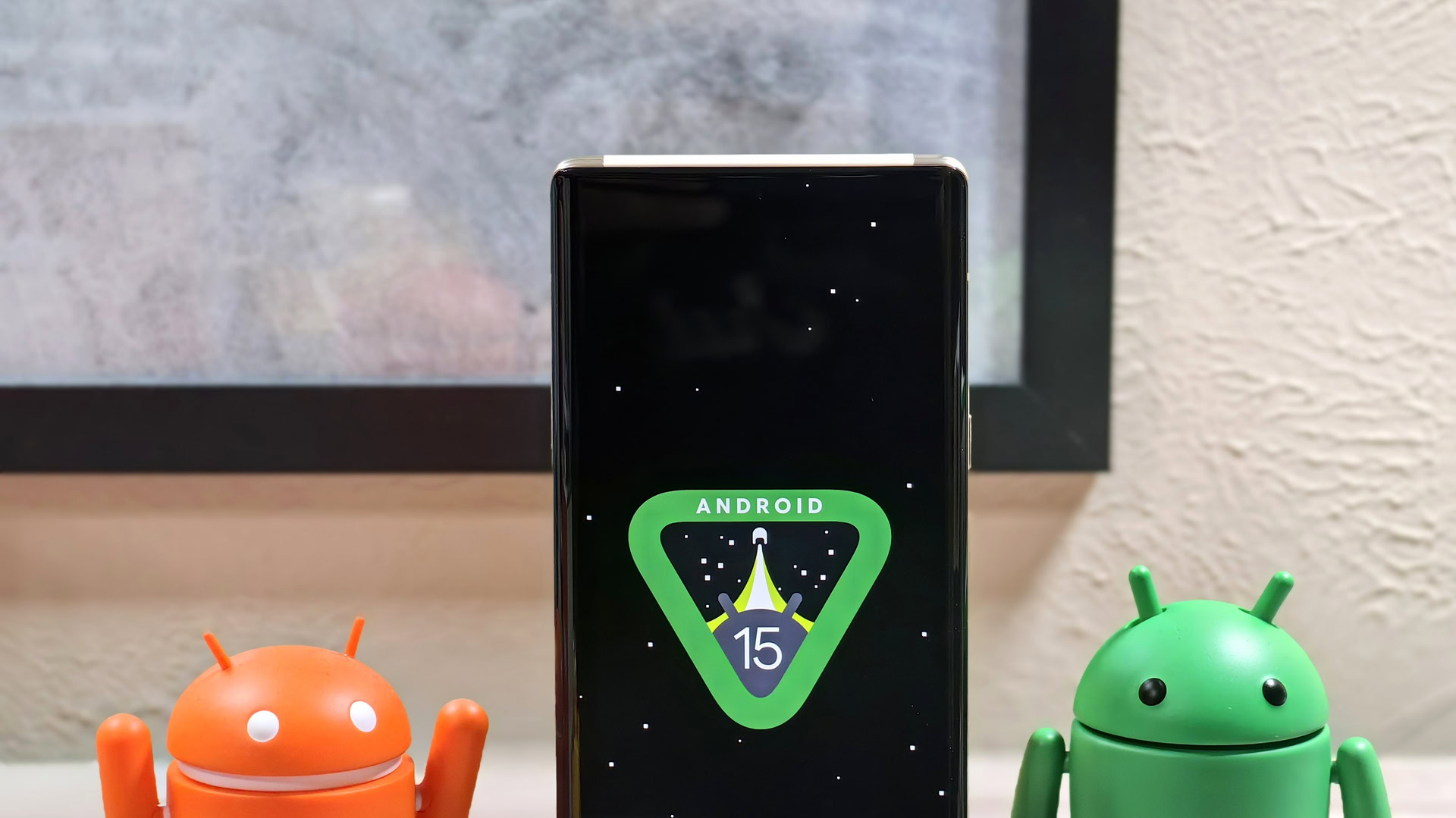




 English (US) ·
English (US) ·